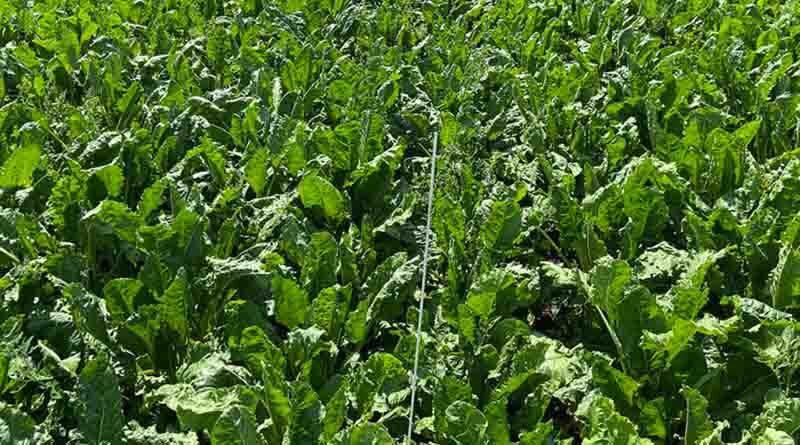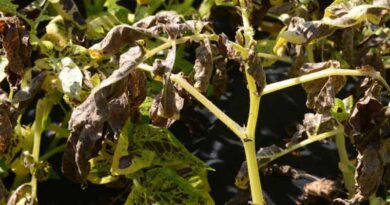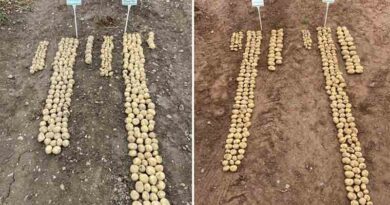Beet gets relief from Quantis as heat rises again
30 July 2022, UK: As temperatures start to climb again and warnings of an August heatwave, interim results from this season’s Quantis sugar beet trials indicate the biostimulant treatments are helping crops to better cope with adverse effects of heat.
Earlier this month sugar beet growers in the eastern counties were already reporting that crops were really struggling, particularly on hot days. Crops on light land were lying flat, with warnings of the impact on yield potential and, as has been experienced in such conditions in the past, complete loss of leaf.
Now, results of replicated trials in a beet crop in South Yorkshire have shown visible physical benefits of reduced wilting and improved leaf vigour from a Quantis application ahead of a stress event, along with definitive physiological effects on plant responses to heat.
Syngenta Technical Manager, Andy Cunningham, reported the split-field crop was treated with Quantis on 15th July, three days ahead of a key heat stress event when temperatures were forecast to exceed 25⁰C.
“The Quantis Heat Stress Event website tool gave advance warning of the potential threat, which saw temperatures hit over 25⁰C for five consecutive days,” he said. “Assessed four days after treatment, the untreated crop was suffering and visibly wilting quite significantly.
“However, the crop was noticeably less wilted where Quantis had been applied at 2.0 l/ha.”
Assessed for leaf vigour during the peak of the heatwave, four days after Quantis application, the treated leaves were over 30% better, at 88.8% compared to 67.5% in the untreated. Even when the heat subsided and the crop reassessed on 22 July, the treated leaf vigour was still over 8% greater.
“Under hot conditions, transpiration results in excessive water loss, where cell dehydration leads to leaf wilting,” pointed out Mr Cunningham. “The potassium content in Quantis acts as an osmo-protectant, where the K+ ions enable the cells to be more hypertonic and retain water more effectively.”
Research at the University of Nottingham has also shown the calcium content can upregulate a plant’s natural anti-oxidant levels, which enables it to better deal with increased production of reactive oxidative species (ROS) that can damage cells and photosynthetic capability, he added.
“Furthermore, when we measured photosynthetic activity in the Yorkshire sugar beet trial, using a Fluorpen, it was clear that the plants were continuing to perform more effectively and better able to utilise the available light, compared to the untreated.”
A measure of non-photochemical quenching (NPQ) – indicating plants are releasing energy as heat, rather than converting into sugar and yield – showed the treated beet was operating 12% better than untreated during the peak of the heatwave, which continued after the highest temperatures had eased.
“When assessed for quantum yield (QY), as a measure of conversion of sunlight through to photosynthesis, the treated plants measured an average 0.66, compared to 0.39 in the untreated – an improvement of 70%.
“Where we have studied these Quantis effects in other crops, the measured physiological effects have resulted in consistent increases in yield and root size,” he reported.
The Yorkshire field trial will continue to be protected through further heat stress events with Quantis, then taken through to final yield and sugar analysis at the end of the season.
Also Read: Investment of Asean and Taiwan in India’s Food Processing Sector















